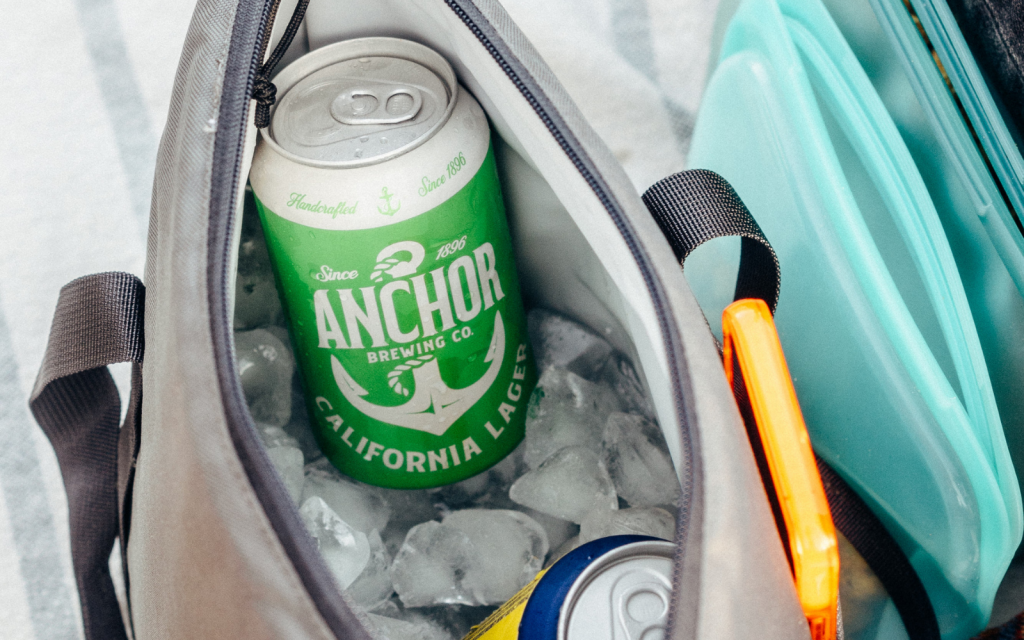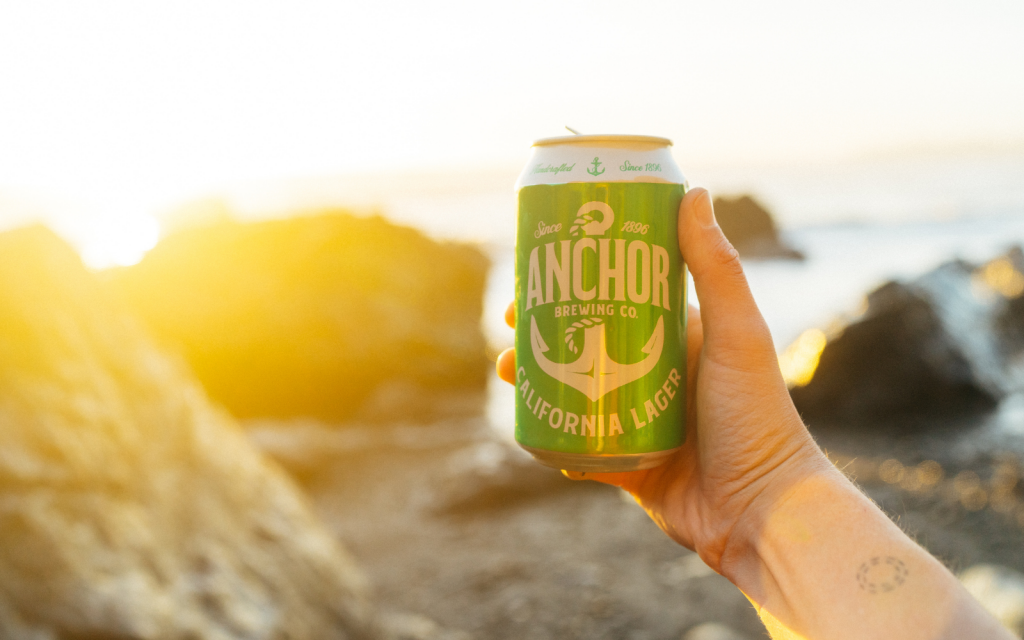Anchor Brewing’s Comprehensive But Uncomplicated Rebrand
The San Francisco staple celebrates its 125th anniversary with a refresh from R/GA

Anchor Brewing‘s rebranding, helmed by R/GA, began as an act of preservation. With their 125th anniversary approaching (they’ll celebrate that milestone this year), the brand collaborated on a new look for the institution. The final product would be responsible for retaining the brewery’s history, which stretches back to 1849, and repositioning the producer in the fast-paced, ever-changing market—one now driven by drinkability, name-recognition and customer loyalty. With that, Anchor favors clarity and storytelling on their all-new cans, containers and social channels.

The rebrand focuses on a signature anchor logo plucked from previous marketing efforts and the stories folded into the brand’s history. Messages and matching illustrations pay homage to the brewery’s hometown of San Francisco and the surrounding terrain—which inspired much of the operation. Their well-known “Steam Beer” references 19th century brewing conditions, or “when ‘steam’ was a nickname for beer brewed on the west coast of America under primitive conditions and without ice.” This beer specifically nods to the “steam that billowed into the San Francisco sky as freshly made brews cooled on brewery rooftops,” the new packaging explains.

One might assume that maintaining the brewery’s history of standard-setting (introducing wheat and porter beers to drinkers post-Prohibition) and innovation (the first-ever account of dry-hopping, the introduction of seasonal beers, the act “microbrewing” prior to the term being coined and beyond) could prove challenging, with what many have reduced to a “millennial makeover.” But, Anchor’s rebrand is a testament to its history, and proof that it’s powerful enough to compel consumers all over the world. The brand team simply felt their beers needed visual cohesion. They opted for resetting the entire portfolio and preparing for three new beers to enter the pipeline.

“It’s as if we came to a crossroads of how do we move into the future but retain our past—and that’s a really difficult spot to try to figure out,” brand manager Tommy Miers tells CH. “How do we do that with an eye to the future but respect for our heritage? As we think about what it means to move forward, first and foremost, you have to look backward—that was the most important thing. We have a staff historian who’s been here at Anchor for 30 years, and his job is quite literally to preserve the history of the brand. He knows everything—literally everything. When we started this process, we sat down with him and we pored through the archives and we talked about what Anchor has been.”

“We were able to dig through the archives and find some pieces that helped inspire where we were going to move forward to,” Miers continues. “Everything that is on our new packaging is inspired by the past: there’s obviously new colors, updated illustrations, a new kind of graphic style that we’re using, but when you really dig into each piece each of it, you learn it’s all part of our past.”

Attracting new drinkers doesn’t only mean making superior beer. Consumers remain loyal to categories, even sectors within larger styles, and might avoid a brewery altogether if it’s been labeled IPA-forward or pastry stout-leaning. The term “classic” deters some, too. So does “commercial.” But Anchor resides in an interesting intersection: despite being 125-years-old and owned by one of the world’s largest beer companies (Sapporo acquired Anchor in 2017), Anchor produces beer people genuinely like—including CH favorite Anchor Christmas Ale. While some commercial breweries are producing hard ciders, seltzers or shandies to keep up with trends, Anchor has progressively tweaked three new beers at their Public Taps pilot brewery (equivalent to an innovation lab) that cater to the 21st century consumer: the fruit-forward Hazy IPA; a crisp, traditional pilsner; and the low-calorie delight called Little Weekend.

“We’re going to be true to what made us Anchor,” Tom Riley, Anchor’s brewmaster as of August 2020, adds. “The process, the beers that Frtiz Maytag introduced into his portfolio in the ’70s will never change. Those beers have stories. I worked for Maytag for 25 years and I understand his vision; I understand the importance of the beers connected to all of these stories. We want people to be able to drink that story when they learn about it. We also need to preserve them because having that history in a bottle is so tangible. Like we said, we’re also looking toward the future. That’s why we’re dabbling in new areas, in new categories, but we want people to know we’re going to retain our roots and our heritage. That’s my job. I came up through the ranks at Anchor, and I feel a lot of responsibility to carry on these traditions.”
Images courtesy of Anchor












